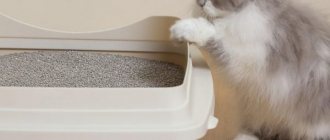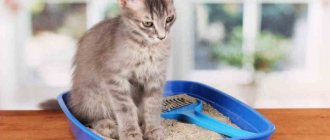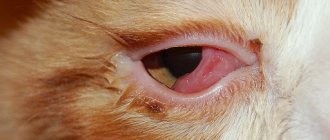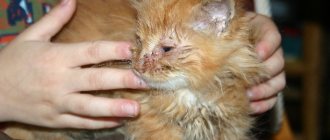In cats and kittens, it can be difficult to differentiate between vomiting/vomiting, regurgitation, and coughing. They are all very different and have different possible causes, so it is important to try to differentiate between them.
Vomiting is the active expulsion of contents from the cat's stomach and small intestine through the mouth. Vomiting is different from regurgitation, which is a passive movement that does not require force to expel contents through the cat's mouth.
You may also mistake it for a cough if you don't notice anything coming out.
It is best to take a video if possible and show it to your veterinarian. He can help you determine if it is actually vomiting, and if so, why your cat is vomiting.
Here is some useful information about the causes of cat vomiting and possible treatments.
Why does my cat feel sick and vomit?
Your veterinarian will ask many questions to determine why your cat is vomiting.
This includes:
- Have you recently changed your cat's diet?
- Have you started taking any prescription or over-the-counter medications?
- What diet, including all treats, is your cat on?
- Do you have other cats in the house, and if so, do they vomit too?
- Is your cat indoors and/or outdoors?
- How often does your cat vomit and what does it look like?
- Does your cat keep eating?
- Does your cat have other symptoms, such as diarrhea and/or weight loss?
- How long has your cat been vomiting?
There are several possible causes of vomiting in cats, and these questions will help point your veterinarian in the right direction. Possible causes of vomiting in cats can be divided into two categories: gastrointestinal causes and non-gastrointestinal causes.
Gastrointestinal causes of vomiting in cats
- Indiscretion in nutrition
- Foreign bodies
- Parasites
- Diet hypersensitivity
- Inflammatory bowel disease
- Constipation
- Cancer
- Ulceration
- Ingestion of toxins (ethylene glycol, chocolate, pesticides, etc.)
Causes of vomiting in cats not related to the gastrointestinal tract
- Pancreatitis
- Kidney disease
- Liver disease
- Diabetes
- Feline infectious peritonitis
- Cancer
- Neurological diseases
Reason #7: Toxins
Poisoning can also cause acute vomiting. If your cat is generally healthy and suddenly starts vomiting, this may indicate poisoning. Even if your cat is only indoors, she may still find poison. For example, many types of houseplants are poisonous to cats, but cats still love to eat them.
What to do? Instead of these plants, offer cat grass instead. Additionally, any pesticides, herbicides, or cleaning products should be kept out of your pet's reach. If you're still using traditional toxic cleaning products, one of the best gifts you can give your entire family is to switch to non-toxic household cleaning products.
Article continues after advertisement
What does your cat's vomit look like?
It's important to know what your cat's vomit looks like, as various medical conditions can cause a more distinct appearance of vomiting. Here are some examples of vomit color/consistency and possible causes for each.
Bile/yellow
The cat will vomit bile on an empty stomach. This can happen if you only feed your cat in the morning and she doesn't eat for 24 hours, or it can happen if cats are anorexic.
Food stimulates the gallbladder to contract, but when the gallbladder does not contract, bile can return to the small intestine and stomach.
Blood
Blood may be seen in ulcers, or if your cat vomits several times in a row, this can irritate the lining of the stomach and esophagus due to the increased acid content.
Blood may also be present when there is a clotting disorder, which occurs with certain diseases and certain toxins (such as rat poisoning).
White foam
White foam in cat vomit is often observed due to inflammation of the lining of the stomach and/or small intestine for various reasons.
Water/clear liquid
If your cat is vomiting clear liquid, it could be liquid stomach contents or your cat has drunk too much water.
There are many possible medical conditions that could cause cats to drink too much water, including diabetes and kidney disease.
Worms
The most common type of worms found in cats vomiting are roundworms. If your cat vomits a worm, it is important to take it to your veterinarian so they can deal with the problem accordingly.
Food
Cats that eat too much or too quickly may regurgitate their food, which is usually tube-shaped. Cats may also vomit food if they start vomiting soon after eating, if there is a foreign body blocking the food from moving into the small intestine, or if they have a food allergy.
Hairballs
Cats can sometimes vomit hairballs, especially cats that groom them too much or cats with long hair.
Brown liquid
This usually indicates digested blood along the digestive tract and manifests as ulcerations, foreign bodies or even hairballs in the intestines.
Green vomit
If your cat's vomit is green, it usually indicates that the food or substance was brought in from the small intestine. A mixture of vomit and bile may change color to green.
Slime
Mucus is usually seen when your cat spits up and doesn't vomit. If you see mucus, it is very important to determine whether your cat is actually vomiting or regurgitating.
Cat vomiting with other symptoms
Often when cats vomit, they also have other symptoms. Describing all of your cat's symptoms to your veterinarian will be important in determining the correct diagnosis or treatment.
Your cat is vomiting and won't eat.
Cats often don't want to eat if they feel sick. You may see this in a variety of conditions including foreign bodies, kidney and liver disease, severe diabetes, inflammatory bowel disease, etc.
Your cat is vomiting and constipated
If your cat hasn't had a bowel movement in a couple of days and is trying to walk, he's probably constipated. This can cause contents to accumulate in the small intestine and stomach, causing nausea and vomiting in the cat.
Your cat is vomiting and has diarrhea.
This combination of symptoms tells us that there is inflammation not only in the stomach, but also in the small and/or large intestine.
Your cat is vomiting and sneezing
If your cat is vomiting and sneezing, he may have contracted a virus (such as coronavirus). Cats that become ill (vomiting) often develop an upper respiratory tract infection.
This is because most cats become infected with certain viruses, such as herpesvirus, as kittens and may behave normally until they become immune.
Your cat is vomiting and drinking a lot
Cats may vomit after drinking large amounts of water. They may also have a medical condition that causes them to drink a lot and vomit, such as kidney disease, diabetes, and cancer.
Your cat is vomiting and pooping on the floor.
Cats may defecate on the floor if they are constipated or have an increased urge to go to the toilet, which is associated with intestinal inflammation and diarrhea.
Should I call the vet if my cat is vomiting?
You should call your veterinarian immediately if:
- Your cat vomits more than two or three times in a row.
- Your cat has other symptoms, such as refusal to eat and diarrhea. If your cat also has diarrhea, it will be difficult to keep him hydrated without seeing a veterinarian.
- Your cat has not eaten or drunk for 12 hours and has vomited several times in a row.
- Your cat has already been diagnosed with a medical condition (such as diabetes, kidney disease, and hyperthyroidism). This is an emergency and your cat should be seen immediately as this may indicate that her illness is progressing. These patients require early medical intervention as they can become dehydrated very quickly.
- Your cat vomited a worm. You need to deworm your cat and other pets as soon as possible. It is also important to keep the environment clean and empty litter boxes several times a day to prevent your pets from becoming reinfected.
Can I give my cat anything at home to stop vomiting?
Unfortunately, there are not many over-the-counter medications that will help cats avoid vomiting. If your cat does start vomiting, do not give him anything by mouth (including water or food) for several hours.
When can I feed my cat again after he has vomited?
After waiting a few hours, you can try feeding your cat about 25% of what you normally feed to see if he can keep it down.
Then gradually increase the amount over the next 24 hours. If your cat starts vomiting again, you will need to seek help from your veterinarian.
Treating vomiting at home
The simplest thing an owner can do to treat vomiting in a cat is to limit its food intake for 1–2 days. You can give the drink, but little by little, so as not to provoke new attacks. In case of dehydration, you can dilute the drug Regidron according to the instructions, which replenishes fluid loss in the body, and feed the cat with it in small portions.
You can prepare a saline solution that helps with dehydration yourself: dissolve 9 grams of salt in 1 liter of water and give your cat a teaspoon of the solution every hour
The following medications can be used at home as prescribed by a veterinarian:
- If the cat refuses to drink or take medications for dehydration, then an injection of Ringer-Locke solution will help.
- For persistent, incessant vomiting, antiemetic drugs will help: phenothiazine, passertin.
- Bismuth preparations will help protect the mucous membrane of the digestive tract from irritating factors.
- If a cat is poisoned, then activated carbon, enterosgel and a dropper with glucose and ascorbic acid help a lot. You can use charcoal and enterosgel yourself, but it is better to get an IV in a veterinary clinic.
- In the most severe cases, caused by infection or damage to the gastric mucosa, the doctor may prescribe antibiotics to the animal.
After solving problems with intoxication of the body or disruption of the digestive system, you need to keep the cat on a special diet for several days, or even weeks: feed it in small portions, but often, several times a day. Food should be light, crushed (in the form of puree), and meat or food based on it should be introduced into the diet gradually. Sometimes an animal needs a diet for several years or the rest of its life.
How to make your cat vomit yourself
Sometimes it becomes necessary to induce vomiting in a cat. For example, if an animal has swallowed something inedible or toxic, then in this way you can quickly remove the harmful substance from the body. TravelWithGirls To do this, you can use a home recipe: dissolve one tablespoon of salt in a glass of warm water. Give the cat this solution until it vomits. You can also add a mechanical effect - press a little deeper than the root of the pet’s tongue, while the cat should stand or lie on its side. It is important not to forget that vomiting is dangerous due to dehydration of the body, and if the vomiting process caused by the owner is prolonged, then you need to take the cat to the veterinarian. Two days of dehydration can lead to the death of a cat.
When provoking vomiting in an animal, it is important for the owner not to forget about the danger of dehydration of the pet’s body.
It is prohibited to use hydrogen peroxide to induce vomiting; it has an aggressive effect on the mucous membranes of the digestive organs and causes a chemical burn!
You cannot induce vomiting in an animal in the following cases:
- The cat drank a toxic liquid such as solvent, alkaline or acidic solution, or detergent. In this case, you need to feed your pet a tablespoon of enterosgel or a couple of tablets of activated carbon mixed in water and quickly take it to a veterinary clinic.
- The pet swallowed an object with sharp edges that could injure the walls of the digestive tract. A tablespoon of Vaseline oil and an immediate visit to the veterinarian will help here.
When to contact a veterinarian
If the animal vomits more than 3 times a day and at the same time it looks weak, sick, depressed, then you need to call a veterinarian at home or take the pet to the clinic.
Other signs indicating the need for medical attention:
- vomiting continues for several days;
- vomit contains impurities that do not resemble food debris, especially blood;
- attacks of vomiting occur regardless of food intake or on an empty stomach;
- vomiting is accompanied by additional symptoms of trouble: diarrhea, changes in body temperature, lacrimation, weakness, tremors of the limbs, etc.
In a veterinary clinic, to diagnose the causes of what is happening, the pet will be prescribed an abdominal ultrasound, x-ray, urine, blood and feces tests.
In a veterinary clinic, to diagnose the causes of what is happening, the pet will be prescribed an ultrasound of the abdominal cavity, an x-ray, urine, blood and feces tests.
The clinic will treat a cat using the following methods and means:
- getting rid of dehydration with a dropper;
- special diet;
- in case of poisoning of an animal, take sorbents;
- for persistent vomiting - take antispasmodic and antiemetic drugs;
- taking medications that protect the liver and stomach;
- diagnosis and treatment of the underlying disease.
Preventive measures
As you know, it is much better to prevent a disease than to treat it. To prevent vomiting in your pet, the following simple rules will help:
- The cat’s diet should consist of high-quality food or natural products, balanced in vitamin and mineral composition;
- vaccinate your pet once a year;
- carry out deworming once a quarter, especially if the cat walks outside or eats raw meat;
- Brush your cat regularly, helping to get rid of hair that he would otherwise swallow when licking;
- keep bedding, beds, bowls and other animal accessories clean;
- hide from cats small objects that are attractive to them that can be swallowed;
- Carry out regular preventive examinations of the animal at the veterinarian.
Preventing theft and eating food inappropriate for a pet from a human table can also be considered as vomiting
When a cat vomits, the owner is required to pay attention to his pet and try to distinguish harmless vomiting from a symptom of a serious illness. Remember that the best method of dealing with a problem is its prevention. In this case, the easiest way would be not to overfeed the cat, provide it with psychological comfort, and also remove from the environment all substances and small objects potentially dangerous to the pet.
How veterinarians treat vomiting in cats
It is important to distinguish between acute and chronic vomiting. Chronic vomiting is defined as a cat that vomits more than once a week or vomits the same thing then breaks for more than three months. This is very different from a cat who suddenly starts vomiting (acute).
Treatment of acute vomiting in cats
The first step in properly treating your cat for vomiting is to determine the underlying cause. First, your veterinarian will perform a non-invasive diagnosis.
This includes:
- Biochemical and complete blood count tests to screen for conditions such as kidney disease and diabetes.
- Stool examination to exclude parasites.
- Abdominal radiograph to rule out larger tumors or foreign bodies that may be causing obstruction.
If these tests are normal and your cat is acutely vomiting, your veterinarian will likely recommend supportive treatment with anti-nausea medications.
Cats that vomit hairballs can be put on a special high-fiber diet along with medications that will help ease the passage of the hairballs.
Treatment for a cat that is constantly vomiting (chronic vomiting in cats)
If your cat continues to vomit or has a history of chronic vomiting, further evaluation will be indicated as described below:
- Gastrointestinal panel: Tests pancreatic enzymes to rule out pancreatitis. He will also look at cobalamin and folic acid to determine if there are signs of malabsorption in the small intestine.
- Abdominal ultrasound: This imaging technique is very sensitive in detecting smaller foreign objects that are not visible to X-rays. This ultrasound examines the pancreas and helps measure the wall of the gastrointestinal tract. This will also help rule out any enlarged lymph nodes, which are sometimes seen with cancer.
- Chest X-ray: This may be recommended if it is unclear whether your cat is vomiting, regurgitating, or coughing. Chest X-rays are also recommended for older cats to rule out signs of cancer.
In some cases, the diagnosis returns to normal or does not provide a definitive diagnosis. This can be seen if the disease is at the cellular level of the small intestine.
In this case, the next step is to obtain a biopsy of your cat's gastrointestinal tract to differentiate between inflammatory bowel disease, food hypersensitivity, and gastrointestinal lymphoma.
Your veterinarian may try a new diet before taking a biopsy if it is due to a food allergy.
What diagnostic measures are carried out in a veterinary clinic?
When a cat is admitted, the veterinarian conducts a full clinical examination. During which the general condition of the cat’s body, coat, is assessed, body temperature is measured, and auscultation of the respiratory organs and heart is performed. Palpation of the abdominal area determines the tone of the abdominal muscles and determines the presence of certain foreign formations. To correctly judge the cat’s health, specialists must conduct a general and biochemical blood test, a blood test for the presence of parasites, pathogens of infectious diseases, a general urinalysis, a stool test for helminths, an ultrasound of the abdominal organs, and an ECG.










